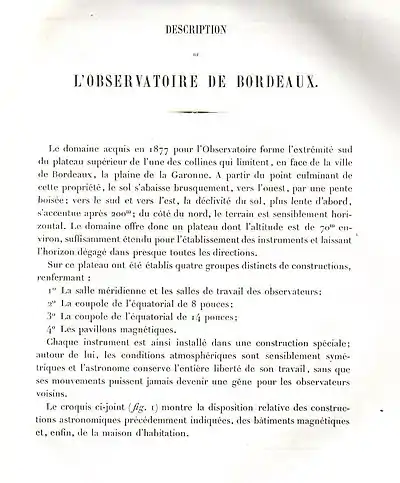Paris inch
The Paris inch or pouce is an archaic unit of length that, among other uses, was common for giving the measurement of lenses.[1] The Paris inch could be subdivided into 12 Paris lines (ligne), and 12 Paris inches made a Paris foot.[1] The Paris foot, Paris inch and Paris line could be abbreviated with the prime symbol ( ′ ), double prime symbol ( ″ ), and triple prime symbol ( ‴ ) respectively, like some other inch and foot units.[1] The Paris inch is longer than the English inch and the Vienna inch, although the Vienna inch was subdivided with a decimal, not 12 lines.[1][2]
| Paris inch | |
|---|---|
| Unit system | French |
| Unit of | length |
| Conversions | |
| 1 paris inch in ... | ... is equal to ... |
| SI units | 0.027069 m |
| imperial/US units | 0.08881 ft 1.0657 in |
—The Ophthalmoscope (1864) [1]
A famous measurement made using the Paris inch is the lens measurement of the first great refractor telescope, the Dorpat Great Refractor, also known as the Fraunhofer 9-inch. The 9-Paris inch diameter lens was made by Joseph von Fraunhofer, which works out to about 24.4 centimetres (9.59 English inches). This lens had the largest aperture of its day for an achromatic lens.[3][4]
The term for telescopes persisted even in the 20th century, with a telescope listed in the 1909 Sears Roebuck catalog of having 25 lignes diameter aperture, or about 80 mm (8 cm).[5]

See also
- English & international inch
- Vienna inch
- Old French units
References
- Zander, Adolf (1864). The Ophthalmoscope.
- warre.biobees.com/christ.pdf, Notes by David Heaf on Anweisung zur nützlichen and angenehmen Bienenzucht für alle Gegenden by Pfarrer Johann Ludwig Christ (1739-1813) Rodheim, Hessen, Germany
- adsabs link Fraunhofer and the Great Dorpat Refractor, Waaland, J. Robert, American Journal of Physics, Volume 35, Issue 4, pp. 344-350 (1967)
- http://www.obs.ee/obs/instrumendid/fr.htm
- "What does "lignes" mean for aperture of antique telescope?". Sky & Telescope. 2006-07-24. Retrieved 2019-10-16.